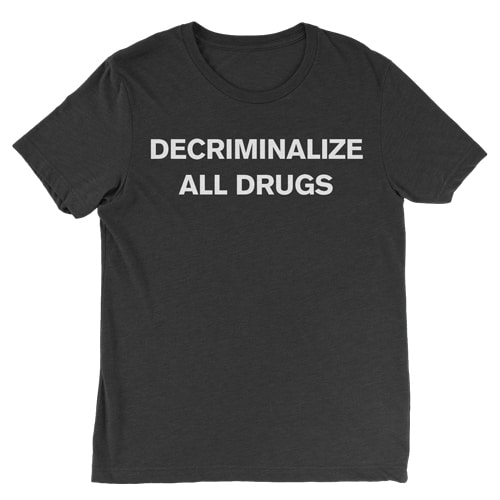Forget Plant-Based Medicine, MDMA is Now Made From Crude Oil
MAPS claims the most sustainable way to produce commercial MDMA is through the use of petrochemical feedstocks.

Psymposia is a 501(c)(3) nonprofit research and media organization that offers critical perspectives on drugs, politics, and culture. We rely on contributions from our readers and listeners. Your support is vital to sustaining Psymposia.
Support Psymposia’s independent journalism on Patreon and help us drive the Mystery Machine! We’re a bunch of meddling kids who are unmasking the latest shenanigans on the psychedelics beat.
David Nickles contributed to this story.
An article published in the Multidisciplinary Association for Psychedelic Studies’ (MAPS) Spring 2020 bulletin revealed that MAPS’ commercial MDMA appears to be derived from crude oil.
While there are many methods available for synthesizing MDMA, a common starting point for the drug has been safrole, an organic compound found in sassafras and other plants. But, Heather Clouting, the director of chemical manufacturing control for MAPS Public Benefit Corporation, wrote in her MAPS bulletin article—“The Commercial Chemistry of MDMA: From Research to Patient Access”—that the precursor MAPS uses for its supply of MDMA is most likely synthesized from crude oil.
“Unlike much of the MDMA that has been synthesized in the last decades (up until relatively recently), the synthetic pathway used for the MAPS synthesis of MDMA does not include safrole or related starting materials. Our key starting material is 5-bromo-1,3-benzodioxole, and its precursor, 1,2-methylenedioxybenzene, is likely synthesized in one step from [catechol], a bulk commodity chemical made in thousands of tons per year from crude oil,” Clouting wrote. The original bulletin article said “catecho,” not “catechol.”
Addressing the choice to use petroleum-derived chemicals over safrole-containing plants like sassafras, MAPS’ former Director of Strategic Communications, Brad Burge, said, “We didn’t want to use sassafras because it’s not possible to harvest it sustainably at the scale we need.”
But, just how sustainable are petroleum-derived chemicals?
Catechol is a petrochemical feedstock which serves as a base molecule for a variety of higher-value products across many industries. Numerous studies have shown that the extraction, utilization, and transportation of petrochemicals negatively impacts the environment in a number of ways. These include oil spills, fossil fuel combustion emissions, and environmental destruction from the extraction and use of resources like coal and oil.
When asked if MAPS had environmental concerns about their reliance on catechol to produce their MDMA, MAPS’ Investigational Medicinal Product (IMP) supply chain manager, Crystal Kohn, stated in an email that “because of the relatively small quantities we are making, less than 30 kg per year, there is no UK requirement for that kind of [environmental impact] assessment, as it is deemed low risk/small scale. If we go above that amount then that may change, but that won’t be for a number of years yet.”
Not to be a joyless communist but if we can't have chocolate without slavery, we shouldn't have chocolate https://t.co/y9QJP5sqx3
— MTF DOOM (@sistersinead) September 6, 2018
MAPS did not comment on the infrastructure necessary to extract and refine crude oil into MDMA, nor the effects of such operations on people (including Indigenous people who live with the realities of extractive industry), animals, or broader ecological systems. And, although MAPS’ use of petrochemical derivatives in this scenario may be negligible, the unfortunate reality is that MAPS could not produce its current MDMA without the social, political, and environmental impacts of extractive industry.
As the psychedelic pharmaceutical industry races to declare the necessity of psychedelics as tools for ending the mental health crisis, petroleum-based MDMA raises significant questions.
If the commercial production of psychedelics requires extractive industry in order to effectively scale—to meet the demand of those privileged enough to afford medicalized psychedelics—are the ecological and human costs of this production justifiable? Who gets to justify such costs in the first place and why? And, how can medicines that are supposedly intended to address the mental health crisis actually achieve that goal if the manufacturing processes necessary for their production are, themselves, traumatizing and destructive?
Hey! Before you go… Psymposia is a 501(c)(3) non-profit media organization that offers critical perspectives on drugs, politics, and culture. We strive to ask challenging questions, and we’re committed to independent reporting, critical analysis, and holding those who wield power accountable.
Our perspectives are informed by critical analysis of the systemic crises of capitalism that have directly contributed to the unmitigated growth of addiction, depression, suicide, and the unraveling of our social relations. The same economic elite and powerful corporate interests who have profited from causing these problems are now proposing “solutions”—solutions which both line their pockets and mask the necessity of structural change.
In order for us to keep unpacking these issues and informing our audience, we need your continuing support. You can sustain Psymposia by becoming a supporter for as little as $2 a month.
Russell Hausfeld
Russell Hausfeld is an investigative journalist and illustrator living in Cincinnati, Ohio. He has a Bachelor’s degree in Journalism and Religious Studies from the University of Cincinnati. His work with Psymposia has been cited in Vice, The Nation, Frontiers in Psychology, New York Magazine’s “Cover Story: Power Trip” podcast, the Daily Beast, the Outlaw Report, Harm Reduction Journal, and more.





